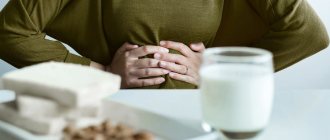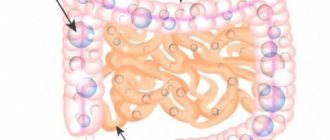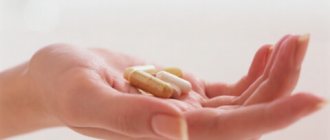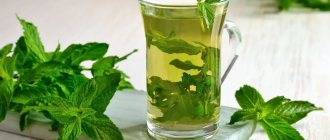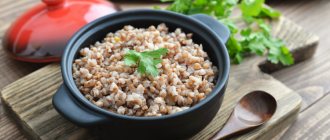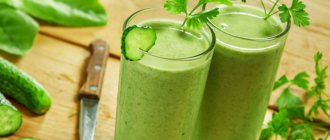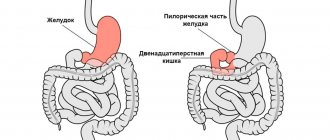In this article we will tell you:
- What is diarrhea, symptoms and possible causes
- The danger of diarrhea when a person needs medical attention
- Basics of proper nutrition for diarrhea
- Pros and cons of diet for diarrhea
- Table of permitted and prohibited products
- Nutrition for diarrhea: pregnant women, children, adults and the elderly
- Diet for chronic diarrhea
- Diet for diarrhea with vomiting
- How to eat during antibiotic therapy
- TOP 10 anti-diarrhea products
Diarrhea or watery stools can be embarrassing and startling at the worst times, such as during a vacation or special event.
But while diarrhea often goes away on its own within two to three days, certain remedies can help you achieve harder stools faster.
Abdominal pain is so common that everyone experiences it at one time or another. There are dozens of reasons why you might have a stomach ache. Most causes are not serious and symptoms go away quickly. Typically, there is no need to look further than your kitchen for a solution.
What is diarrhea, symptoms and possible causes
Diarrhea is characterized by loose, watery stools or a frequent need to have bowel movements. It usually lasts several days and often goes away without treatment.
Diarrhea can be acute or chronic.
Acute diarrhea
occurs when the condition lasts one to two days. You may have diarrhea as a result of a viral or bacterial infection. In other cases, it could be due to food poisoning.
There is a condition known as traveler's diarrhea, which occurs when you get diarrhea after being exposed to bacteria or parasites while on vacation in a developing country. Acute diarrhea is quite common.
Chronic diarrhea
is diarrhea that lasts at least four weeks. This is usually the result of an intestinal disease or disorder such as celiac disease or Crohn's disease.
What causes diarrhea?
You may experience diarrhea as a result of a number of conditions or circumstances. Possible causes of diarrhea:
- food intolerances, such as lactose intolerance;
- food allergies;
- adverse reaction to medication;
- viral infection;
- bacterial infection;
- intestinal disease;
- parasitic infection;
- surgery on the gallbladder or stomach.
Rotavirus
- A common cause of childhood diarrhea. Bacterial infections such as salmonella or E. coli are also common.
Chronic diarrhea may be a symptom of a more serious condition, such as irritable bowel syndrome or inflammatory bowel disease. Frequent and severe diarrhea may be a sign of an intestinal disease or functional bowel disorder.
What are the symptoms of diarrhea?
You can experience just one of them or any combination of them. Symptoms depend on the cause. One or more of the following symptoms often occur:
- nausea;
- abdominal pain;
- spasms;
- bloating;
- dehydration;
- fever;
- bloody stool;
- frequent urge to have bowel movements.
How is the cause of diarrhea diagnosed?
Your doctor will perform a physical examination and review your medical history when determining the cause of your diarrhea. The specialist may also order laboratory tests to examine urine and blood samples.
Additional tests your doctor may order to determine the cause of diarrhea and other related conditions may include:
- allergen tests to determine whether the cause is a food intolerance or allergy;
- stool culture to check for bacteria, parasites, or signs of disease;
- colonoscopy to check for signs of bowel disease;
- sigmoidoscopy to check the rectum and lower colon for signs of bowel disease.
A colonoscopy or sigmoidoscopy is especially useful in determining whether you have an intestinal disease if you have severe or chronic diarrhea.
What to eat?
During the acute period of the disease (1-2 days), some doctors advise fasting. This method is justified if diarrhea is caused by infection or poisoning. These conditions are usually accompanied by other symptoms and loss of appetite.
If the cause of the malaise is functional disorders of the intestines, and the appetite remains, then nutrition is not completely excluded.
During diarrhea, you need to eat light, high-calorie foods that are quickly digested. Portions should be small.
What you can eat: | |
| In the first days | Boiled rice, rice water; Baked apples and pears; White bread crackers; Liquid porridges (semolina, rice, oatmeal). |
| After stabilization | Boiled carrots; Vegetable soups; Steam omelette; Lean meat, fish Kissel; Green tea with honey. |
The danger of diarrhea when a person needs medical attention
Although in many cases diarrhea can be treated at home with over-the-counter remedies, rest, and a temporarily restricted diet, if it lasts long enough, you should consult your doctor. Contact a specialist if
:
- your diarrhea lasts more than two days without improvement;
- you become dehydrated.
Dehydration and diarrhea
Diarrhea can cause you to lose fluid quickly and put you at risk of dehydration. If you don't get treatment for diarrhea, it can have very serious consequences.
Symptoms of dehydration include
:
- fatigue;
- dry mucous membranes;
- increased heart rate;
- headache;
- frivolity;
- increased thirst;
- decreased urination;
- dry mouth.
We recommend
“Good carbohydrates: list of foods for weight loss” Read more
If you are dehydrated or have other symptoms, you may need to go to the emergency room to receive immediate treatment.
Other symptoms to look out for include black or bloody stools, severe abdominal pain, or fever (39°C) or higher.
Diarrhea
- a serious disease for young children. This can cause severe dehydration in an infant in just one day.
Get treatment right away if any of the following conditions apply to your child:
- Diarrhea for 24 hours or more.
- Temperature 39°C or higher.
- Bloody stool.
- Stool containing pus.
- The stool is black and tarry.
These are all symptoms that indicate an emergency.
Basics of proper nutrition for diarrhea
Whether your diarrhea is episodic and caused by allergies/food poisoning or a chronic condition such as irritable bowel syndrome or Crohn's disease, diet and diarrhea go hand in hand.
Even if you have chronic diseases that affect your digestive system, the diet you eat can greatly affect your digestive system.
When you experience a bout of diarrhea, there are certain foods you can eat to help your digestive system return to normal.
Foods to eat if you have diarrhea
When you have diarrhea, the foods you eat and the foods you avoid can make all the difference in helping you recover faster. This is where BRAT products come in handy.
BRAT stands for Bananas, Rice, Apples, Toast. These products are gentle, so they do not aggravate the digestive system, while strengthening it.
The BRAT diet consists of bland, low-fiber foods and is often recommended for treating stomach problems, digestive illnesses, and diarrhea.
Study
: Bland Diet
Pediatricians have historically prescribed the BRAT diet to infants suffering from diarrhea.
Study
: Diarrhea
Sticking to them after you get rid of nausea, vomiting and diarrhea will help you feel better faster.
You also need to drink plenty of fluids to stay hydrated and replace lost fluids. Drink plenty of water and suck on ice cubes. Other liquids you can try include
:
- clear broths, such as chicken or beef, with the fat removed;
- water with increased electrolytes or coconut water with vitamins or electrolytes (try to avoid those with high sugar content);
- weak tea without caffeine.
How to Follow the BRAT Diet
There are limited evidence-based recommendations on how to exactly follow the BRAT diet, but recommendations for a three-day plan do exist.
During the first 6 hours
After illness, you may refuse to eat at all.
- Give your stomach a rest and wait until the vomiting and diarrhea stop completely.
- While you wait to eat, try sucking on ice cubes and drinking water. This will help replenish water and electrolytes lost due to illness.
- Try reintroducing clear liquids, such as water, apple juice, vegetable broth, or chicken broth, into your diet within the first 24 hours of illness.
If symptoms return, stop drinking clear liquids and wait a couple of hours before trying again.
On the second day
start following the BRAT diet. This diet is limited and not very nutritious, so you won't want to stay on it any longer than necessary.
On the third day
After illness, you can begin to gradually reintroduce normal foods into your diet if you feel so.
Start with foods such as eggs, cooked fruits and vegetables, and white meats such as chicken or turkey.
It is important to monitor your body's signals. If you eat too much variety too quickly, your symptoms may return.
Foods to avoid if you have diarrhea
When you experience or are recovering from diarrhea, you should avoid eating large amounts of foods. These foods can trigger your digestive system and worsen or prolong diarrhea:
- milk and dairy products (including milk-based protein drinks);
- fried, fatty foods;
- spicy food;
- processed foods, especially those with additives;
- pork and veal;
- sardines;
- raw vegetables;
- rhubarb;
- onion;
- corn;
- all citrus fruits;
- other fruits such as pineapples, cherries, berries with seeds, figs, currants and grapes;
- alcohol;
- coffee, soda and other caffeinated or carbonated drinks;
- artificial sweeteners, including sorbitol.
Pros and cons of diet for diarrhea
Although there are no clinical trials of the BRAT diet, some research exists on how foods included in the BRAT diet affect diarrhea.
Bananas, for example, contain a certain starch called pectin, which is beneficial for the digestive tract.
Study
: Health Benefits of Green Banana Consumption: A Systematic Review
Bananas also contain potassium, which helps in the absorption of water and electrolytes.
A 2021 systematic review found that green banana pulp may help reduce both diarrhea and constipation in children.
Study
: Health Benefits of Green Banana Consumption: A Systematic Review
A 2021 study found that rice soup is very effective in treating acute diarrhea in children.
Study
: The Effect of G-ORS Along With Rice Soup in the Treatment of Acute Diarrhea in Children: A Single-Blind Randomized Controlled Trial
While these results are promising, they cannot determine whether a diet consisting only of soft foods is effective and safe in treating stomach problems.
The restrictions of the BRAT diet may do more harm than good.
In one outdated study, researchers found that 2 weeks of the BRAT diet could lead to severe malnutrition along with other medical problems in children.
Admittedly, this case was extreme and the study is not current.
We recommend
“The most dangerous fats: how they affect health” Read more
But no follow-up studies have been conducted on the effectiveness of the BRAT diet.
Today recommends feeding children a balanced diet as soon as they recover, and breastfeeding infants or giving them complete formula.
For adults and children, the BRAT diet is probably better than no foods at all.
More modern research is needed to determine whether the BRAT diet is a beneficial solution for people with stomach problems.
The goal is to return to a normal diet as soon as possible, even if diarrhea persists, to avoid malnutrition.
Causes of diarrhea in older people
Old age greatly affects the performance of the body.
In older people, fermentation deteriorates, especially noticeable is the decline in the number of taste buds. To replenish it and feel the bright taste of food, a person eats very spicy, salty and sweet foods. The causes of disruption of the digestive system can be:
- lack of teeth in the oral cavity;
- Crohn's disease, ulcerative colitis;
- long-term use of antibiotics;
- addiction to harmful, unhealthy food;
- unsanitary conditions;
- stress, blues, depression;
- the body's response to complications of endocrine diseases and diabetes.
Read material on the topic: Health of older people
Table of permitted and prohibited products
| Products | Recommended | Excluded from the diet |
| Bread, pastries | Wheat bread made from premium flour, freshly baked yesterday - limited availability. Rusks made from premium wheat bread - thin slices, unfried | Rye and fresh bread, muffins, pancakes, pancakes, all other baked goods |
| Meat, poultry | Low-fat varieties of lean veal, beef, rabbit, turkey, chicken - pureed or chopped. Fascia, tendons, and skin of the birds are removed. The minced meat is passed through a meat grinder 2-3 times. Boiled or steamed meatballs. Lean chicken or boiled chicken. | Fatty varieties of any meat, lamb, pork. Meat cooked in pieces. Duck, goose. Sausages, smoked meats, canned meats |
| Fish | Low-fat varieties (perch, carp, pike perch, etc.) boiled in pieces or chopped (cutlets, meatballs, steamed dumplings) | Fatty types, smoked, salted, canned fish, caviar |
| Eggs | 1, sometimes 2 pieces per day. Soft-boiled, in the form of a steam omelet, added to dishes | Hard-boiled, fried eggs, raw |
| Milk products | Acidophilus milk, acidophilus paste, fresh calcined or unleavened cottage cheese - pureed, in the form of a steam soufflé | Whole milk, kefir, sour cream, other dairy products |
| Cereals, legumes, pasta | Hercules, semolina, pureed buckwheat, rice, cereal flour - porridge with water or low-fat broth. Steam puddings, boiled vermicelli. | Pearl barley, barley, millet, crumbly porridge, porridge with milk, pasta casseroles, all legumes |
| Fats | Butter - 5 grams per prepared dish per meal | All other fats |
| First meal | Soups with low-fat, weak meat, chicken, and fish broth with the addition of rice, semolina, mucous decoctions of cereals, vermicelli, steamed dumplings, meatballs, egg flakes, and pureed meat | Soups with strong and fatty broths, with legumes, with vegetables, cold soups |
| Vegetables | Exclusively in the form of decoctions - added to first courses | In any other form |
| Spices, sauces | None. Everyone is excluded! | Any |
| Fruits, berries, sweets | Raw apple puree. Jelly and jelly from fresh juice or decoction of non-acidic fruits and berries (quince, pear, dogwood, bird cherry, blueberry, dried black currant). Sugar in limited quantities | Fresh berries and fruits, dried fruits, jam, honey, other sweets |
| Beverages | Tea, preferably green, black coffee, cocoa with water. Decoctions of dried rose hips, quince, bird cherry, blueberry, black currant. If well tolerated, juices of non-acidic fruits and berries, diluted with water, except apricots, grapes, plums | Cocoa with milk, coffee with milk, kvass, carbonated and cold drinks, grape juice |
Nutrition for diarrhea
Pregnant
Diarrhea often occurs during pregnancy. However, just because you have diarrhea does not necessarily mean it is directly related to your pregnancy.
Causes other than pregnancy include
:
- virus;
- bacteria;
- stomach flu;
- intestinal parasites;
- food poisoning;
- medications.
Causes of diarrhea associated with pregnancy include
:
- Diet changes
. Many women radically change their diet when they find out they are pregnant. This sudden shift in food intake can upset your stomach and potentially cause diarrhea.
- New food sensitivities
. Food sensitivities may be one of the many changes you experience during pregnancy. Foods that never bothered you before pregnancy can now cause gas, upset stomach, and diarrhea.
- Prenatal vitamins
. Taking prenatal vitamins is good for both your health and the health of your growing baby. However, these vitamins can cause stomach upset and diarrhea.
- Hormonal changes
. Hormones can slow down the digestive system, so constipation may occur. Hormones can also speed up your digestive system, which can cause diarrhea.
Diarrhea is more common in the third trimester.
As your due date approaches, you may find that diarrhea becomes more common.
Some women won't even experience frequent diarrhea in the third trimester, although others will. Each person's experience will be different.
In fact, in most cases, diarrhea goes away without treatment.
Contact your doctor if diarrhea does not go away after two to three days. Your doctor will perform a physical examination and may draw blood to determine the cause of your diarrhea.
Certain food groups can make diarrhea worse. Avoid fatty foods, fried foods, spicy foods, milk and dairy products, and high fiber foods.
Do not take over-the-counter antidiarrheal medications without consulting your doctor. These medications may make certain conditions worse. Plus, they are not safe for anyone.
Children
If your baby eats solids, giving him pieces of food can help relieve diarrhea. These include:
- crackers;
- porridge;
- pasta;
- bananas.
Avoid the following foods that may make diarrhea worse:
:
- cow's milk, except dairy products in their mixture (in any case, you should avoid cow's milk until your baby is 1 year old);
- apple juice and other fruit juices (should be avoided anyway until your child is 2 years old);
- fried food;
- spicy food.
Adults and elderly
When creating a diet for diarrhea, it is important to formulate the diet so that the foods consumed
:
- They included a sufficient amount of useful substances and did not create a load on the inflamed organs of the gastrointestinal tract.
- Contained a lot of potassium, calcium and iron.
In this case, the total calorie content of the menu should not exceed 1800-2000 kcal.
The diet should be aimed at eliminating fermentation processes. This will speed up the restoration of intestinal function and stabilization of stool. You should not eat foods that stimulate gas formation.
It is important to consume plenty of water and herbal infusions. This will help remove toxins and normalize the condition.
And also adhere to a gentle regime, excluding foods high in acids.
When preparing food, you should avoid using hot spices, salt and other substances that irritate the intestinal walls.
Elderly people suffering from diarrhea are recommended to eat porridge cooked in water without adding butter. Rice and buckwheat are especially useful.
We recommend
“Nutrition for diabetes: basic rules and permitted foods” Read more
Heat-treated vegetables must be present in the diet.
Important sources of fiber are carrots, zucchini, pumpkin, and potatoes.
It is recommended to consume lean meats, including: veal; rabbit meat; turkeys; Chicken. When preparing dishes, the meat is cleaned of skin, cartilage and tendons.
In addition, you can heat-treated non-acidic berries and fruits in the form of sauces, mousses, jelly and purees.
How to avoid complications of diarrhea
Against the background of chronic diarrhea, the development of hypovitaminosis, which occurs due to the removal of vitamins and minerals from the body, is often observed. To compensate for the resulting deficiency, you need to include heat-treated vegetables and fruits in your diet.
In some cases, you should take multivitamins. To prevent dehydration, you need to drink as much fluid as possible.
To prevent exhaustion, you should adhere to a gentle diet. The recommended dishes will not create an increased load on the digestive organs, so the beneficial substances from food will be absorbed.
Diet for chronic diarrhea
The main symptom of chronic diarrhea is loose or watery stools that persist for several weeks. This stool may or may not be accompanied by a feeling of urge. You may also have other symptoms:
- abdominal cramps;
- bloating;
- nausea.
Keep a food diary to determine if diet is a major factor in chronic diarrhea. Write down all your meals and snacks and note any worsening symptoms.
After a few weeks, you will be able to identify possible irritating foods. If so, eliminate these foods from your diet to see if your symptoms improve.
For example, diarrhea may stop or improve significantly after stopping gluten, artificial sweeteners, or dairy products. Or your condition may improve after you eliminate certain vegetables, fruits and beans from your diet.
Lifestyle changes that can help relieve chronic diarrhea include
:
- avoidance of caffeine and alcoholic beverages;
- low fiber foods;
- drink clear liquids to prevent dehydration;
- control food portions to avoid overeating.
Chronic diarrhea caused by an underlying disease cannot always be prevented.
But you can prevent chronic diarrhea due to infection by taking steps to keep your food and water clean:
- Drink from clean water or filter your water.
- Cook the meat thoroughly.
- Wash your hands after preparing food and before eating.
- Clean kitchen surfaces to prevent contamination.
- Wash fruits and vegetables before eating them.
- Wash your hands after using the toilet, changing a diaper, or helping someone who is sick.
What foods don't go together?
Even if the patient adheres to proper nutrition, the combination of certain products, due to his ignorance, can cause problems with the gastrointestinal tract - diarrhea, flatulence, vomiting. To prevent this from happening, it is important to remember which products cannot be combined with each other:
- It is not recommended to mix ghee and honey.
- You can't mix fruit with anything. This is a separate dish.
- It is recommended to mix radishes and honey only with plant products.
- Pork and chicken cannot be combined in one dish, or even on the same day.
- It is not recommended to combine buttermilk and bananas, dates and cottage cheese, alcohol and milk, as well as fish and black pepper.
- Lemon should not be combined with dairy products, as well as tomatoes and cucumbers due to high acidity.
- Raw foods with hot, thermally processed foods are poorly digestible. Fresh vegetable salad is best eaten separately from meat with a side dish.
- A combination of milk with various fruits, nuts, meat, eggs, yogurt, beans, peas. lentils and vegetables can disrupt digestive enzymes.
Diet for diarrhea with vomiting
Diarrhea and vomiting
are common symptoms that affect people of all ages, from babies and toddlers to adults.
In most cases, these two symptoms are the result of a stomach bug or food poisoning and will subside within a few days.
In general, resting and drinking plenty of fluids is enough to avoid dehydration.
We recommend
“Vitamins for colds: why take them and their benefits for the body” Read more
Here are some ways to treat vomiting and diarrhea at home to stay hydrated.
:
- Drink plenty of clear liquids such as water, broth
- Follow the BRAT diet
- Avoid fatty, spicy or fatty and sugary foods.
- Avoid dairy products.
- Avoid caffeine.
- Wash your hands often with soap and water.
Sometimes diarrhea and vomiting may require treatment.
Take your child to the doctor if
:
- less than 12 months and showing signs of dehydration;
- diarrhea for more than seven days or vomiting for more than two days;
- under 3 months at a temperature of 38 ° C;
- 3 to 6 months at 39°C.
Take your child to the emergency room if
:
- there are signs of dehydration after taking oral rehydration solution;
- there is blood in the urine or stool;
- green or yellow vomit.
For adults. Contact your doctor if
:
- Still dehydrated after rehydrating with fluids and an oral hydration solution.
- You have bloody diarrhea or rectal bleeding.
- Your vomit is yellow or green.
- You have diarrhea that lasts more than seven days, or you have been vomiting for more than two days.
Dairy and fermented milk foods
A huge percentage of adults suffer from milk intolerance. Diarrhea may worsen if the patient had an intestinal or viral infection the day before. In addition, milk from different producers is digested differently.
A large number of patients have lactose deficiency, i.e. milk intolerance. The degree of activity of these enzymes can be explained by racial, ethnic and individual characteristics of the body. As for fermented milk products, they are acceptable in the treatment of diarrhea, as they normalize the intestinal microflora, eliminate flatulence and fermentation. “Three-day” kefir prepared using a starter for 3 days will help fix the stool.
How to eat during antibiotic therapy
Antibiotic-associated diarrhea is quite common. It is estimated that between 5 and 25 percent of adults will experience diarrhea while taking antibiotics.
This occurs when antibiotics upset the natural balance of bacteria in the intestines. This can irritate your digestive system and increase your risk of illness from certain types of harmful bacteria, such as C. diff.
All types of antibiotics can cause diarrhea. However, certain types of antibiotics, such as penicillins and cephalosporins, may cause it more frequently.
Antibiotic-associated diarrhea is defined as loose, watery stools three or more times a day while taking antibiotics.
This may begin about a week after starting antibiotics. In addition, diarrhea may develop a few weeks after finishing treatment.
We recommend
“Vitamins for vigor: how to take them correctly and their daily dosage” Read more
If you have a C. diff infection, you may experience additional symptoms, such as:
- stomach pain or cramps;
- low-grade fever;
- decreased appetite;
- nausea.
If you are experiencing diarrhea due to taking antibiotics, changing your diet may help relieve symptoms. Some common suggestions include
:
- Eating low fiber foods. Although high-fiber foods are recommended when you are healthy, eating them when you have diarrhea may make your condition worse.
- Potassium replacement. This nutrient can be lost due to diarrhea, but eating foods containing potassium can help replenish it.
- Replenishment of lost fluids and salts. Diarrhea can cause fluid and electrolytes to be lost more quickly, so it is important to replenish them.
Based on these tips, try the following foods and drinks for diarrhea:
:
- liquids, including water, broths, or decaffeinated tea;
- fruits such as bananas, applesauce, or small amounts of canned fruit without syrup;
- grains such as white rice, white bread and noodles;
- peeled potatoes (good source of potassium), boiled or baked;
- protein sources such as poultry, lean meats and fish.
Some foods may worsen your symptoms or interfere with antibiotic treatment. These include
:
- alcoholic drinks;
- caffeinated drinks such as coffee, soda and tea;
- dairy products can cause digestive problems when taking antibiotics and may affect the absorption of antibiotics;
- fatty foods such as fatty meats, baked goods, potato chips, french fries and other fried foods;
- foods or drinks high in added sugar, such as carbonated drinks, fruit juices, cakes and cookies;
- High-fiber foods such as whole grains, legumes and most fruits and vegetables;
- spicy foods, which can further irritate the digestive tract.
Also, try not to eat grapefruit or take calcium supplements. They can affect how well antibiotics are absorbed by your body and may make the medicine less effective.
Here are some steps you can take to reduce your risk of developing antibiotic-associated diarrhea.
- Try probiotics
. Probiotics can help return beneficial bacteria to your digestive system.
- Maintain good hygiene
. Washing your hands frequently, especially after using the restroom, can help prevent the spread of C. diff bacteria.
- Follow the instructions
. Some antibiotics may be recommended to be taken with food.
Take antibiotics only when necessary.
We recommend
“Protein deficiency: symptoms and diagnosis” Read more
Although antibiotics can treat bacterial infections, they are not effective against viral infections such as colds and flu. Overuse of antibiotics can negatively impact your digestive health and cause other problems.
If you have previously had diarrhea while taking antibiotics, tell your doctor. He can choose an antibiotic that is less likely to cause this problem.
What should be the diet for gastrointestinal diseases?
The diet for intestinal diseases should not be meager; on the contrary, it will be necessary to include sufficiently high-calorie foods in the diet. If a person’s food absorption process is disrupted, then he usually begins to quickly lose weight, not only fat, but also muscle tissue “melts”. This process must be balanced by increasing the amount of complete protein entering the body (at least 130-140 g).
It is recommended to switch to fractional meals
and eat small meals 5-6 times a day to reduce stress on the intestines. Food will enter the body more evenly, and the body will be able to absorb more nutrients.
Top 10 anti-diarrhea foods
- Chamomile
Historically, chamomile has been used for a variety of intestinal disorders, including gas, indigestion, diarrhea, nausea, and vomiting.
An animal study found that chamomile extracts relieved diarrhea in mice by reducing intestinal spasms and reducing the amount of water passed into stool, but more research is needed to see if this applies to humans.
Study
: Antidiarrhoeal, antisecretory and antispasmodic activities of Matricaria chamomilla are mediated predominantly through K(+)-channels activation
- Peppermint
For some people, indigestion is caused by irritable bowel syndrome (a chronic bowel disease that can cause stomach pain, bloating, constipation and diarrhea).
Although IBS can be difficult to manage, research shows that peppermint may help reduce these unpleasant symptoms.
Taking Peppermint Oil Capsules daily for at least two weeks can significantly reduce stomach pain, gas, and diarrhea in adults with IBS.
Study
: Peppermint oil for the treatment of irritable bowel syndrome: a systematic review and meta-analysis
Peppermint is safe for most people, but caution is advised for those with severe reflux, hiatal hernia, kidney stones, or liver and gallbladder disease, as it may worsen these conditions.
- Green bananas
In fact, one study found that adding boiled green bananas was nearly four times more effective at relieving diarrhea than a rice-based diet.
The strong anti-diarrheal effect of green bananas is due to the fact that they contain a special type of fiber known as resistant starch.
We recommend
“Carbohydrates in cereals: beneficial properties and their importance in losing weight” Read more
Resistant starch cannot be digested by humans, so it passes through the digestive tract all the way to the colon, the last part of the intestines.
Once in the colon, it is slowly fermented by intestinal bacteria to form short-chain fatty acids, which stimulate the intestines to absorb more water and strengthen the stool.
- Pectin
Pectin
is a type of plant fiber found in large quantities in apples and citrus fruits. It is often isolated from these fruits and sold as its own food product or supplement.
Pectin is not digested by humans, so it remains in the intestinal tract, where it is very effective at strengthening stool and preventing diarrhea.
In fact, one study found that 82% of sick children taking daily pectin supplements recovered from diarrhea within 4 days, compared to only 23% of children who did not take pectin supplements.
Study
: Clinical studies in persistent diarrhea: dietary management with green banana or pectin in Bangladeshi children
Pectin also relieves indigestion by promoting the growth of beneficial bacteria in the digestive tract.
- Low FODMAP Foods
FODMAP
is an abbreviation for the concept “fermentable oligo-, di-, and monosaccharides and polyols”, which means “fermentable oligo-, di- and monosaccharides and polyols”. In other words, these are carbohydrates that are poorly digested and cause fermentation processes in the intestines.
When undigested FODMAPs enter the colon, they are quickly fermented by gut bacteria, creating excessive gas and bloating. They also attract water, which causes diarrhea.
A review of 10 randomized controlled trials found that a low FODMAP diet improved these symptoms in 50–80% of people with IBS.
Study
: The low FODMAP diet: recent advances in understanding its mechanisms and efficacy in IBS
While not all people with digestive issues have trouble digesting FODMAPs, working with a specialist can help you determine if any of them are causing problems.
- Foods rich in probiotics and prebiotics
Feeding your gut good bacteria with probiotics can help you feel better quickly.
For diarrhea, Lactobacillus GG and Saccharomycesboulardii strains are recommended. A 2015 study found that both strains could help shorten the duration of illness by 1 day.
Study
: Probiotics for Prevention and Treatment of Diarrhea
You can buy probiotics in capsule or liquid forms.
Probiotics are also found in fermented foods such as yogurt and kombucha.
In addition to fermented milk products, which are not suitable for everyone: miso, natto, tempeh, sauerkraut, kimchi and kombucha.
We recommend
“Sources of carbohydrates: excess and deficiency in food” Read more
But more research is needed to determine how they affect gut health.
- Light carbohydrates such as rice, oatmeal
Although this recommendation is general, there is little evidence that they actually help relieve symptoms.
However, many people report that it is easier to consume these foods when you are not feeling well.
- Liquids with electrolytes
When an upset stomach is accompanied by vomiting or diarrhea, it is easy to become dehydrated.
Water, fruit juice, coconut water, and broths are great ways to restore fluid loss and electrolyte imbalances associated with mild dehydration.
If dehydration is severe, a rehydration drink containing the ideal ratio of water, sugar and electrolytes may be required.
- Chicken bouillon
Everyone knows about the ability of broth to restore strength during illness and large loss of fluid - with fever and indigestion. It is quickly absorbed and removes toxins.
- Prebiotic-rich fiber
may also be beneficial as prebiotics help feed gut bacteria
These fibers can be found in:
- chicory root
- legumes
- berries
- bananas
- oats
Herbs and spices such as ginger, chamomile, mint and licorice have natural calming properties, while fruits such as green bananas improve digestion.
Avoiding foods high in FODMAPs helps some people relieve gas, bloating and diarrhea, while foods with probiotics can help regulate bowel movements.
When an upset stomach is accompanied by vomiting or diarrhea, be sure to hydrate and replace electrolytes.
The diet must contain the required amount of dietary fiber, vitamins, minerals and other substances.
The menu is designed so that the food does not irritate the intestines, but envelops it.
Menu for diarrhea
Below is a menu recommended for people suffering from diarrhea, designed for 3 days.
First day
Breakfast
: slimy rice porridge with raisins - 150 g, steamed protein omelet from 2 eggs, compote - 1 tbsp.
Lunch
: crackers - 50 g, herbal tea
Dinner
: chicken broth soup with meatballs - 150 ml, buckwheat porridge - 100 g, steamed turkey cutlet - 1 pc., jelly - 1 tbsp.
Afternoon snack
: dried fruit compote - 1 tbsp, cheesecakes - 2-3 pcs.
Dinner
: rice porridge - 100 g, steamed fish - 50 g, vegetable stew - 100 g, herbal tea - 1 tbsp.
We recommend
“Diet for obesity: diagnosis and nutrition selection” Read more
Second day
Breakfast
: pumpkin porridge with rice - 150 g, chicken cutlets - 2 pcs., compote - 1 tbsp.
Lunch
: oatmeal with pieces of fruit and raisins - 150 ml, tea - 1 tbsp. Lunch: lean fish soup - 150 ml, mashed potatoes - 100 g, baked chicken breast - 50 g, jelly - 1 tbsp.
Afternoon snack
: baked apples - 2 pcs., crackers - 50 g, rice water - 1 tbsp.
Dinner
: buckwheat porridge - 150 g, baked fish - 50 g, vegetable stew - 50 g, compote - 1 tbsp.
The third day
Breakfast
: meatballs from minced chicken and rice - 2-3 pcs., dried bread - 2 slices, jelly - 1 tbsp.
Lunch
: muesli - 150 g, herbal tea - 1 tbsp.
Dinner
: vegetable soup with noodles - 150 ml, carrot puree - 50 g, boiled rabbit meat - 50 g, compote - 1 tbsp.
Afternoon snack
: boiled pear puree - 150 g, tea - 1 tbsp.
Dinner
: pasta - 100 g, boiled fish - 50 g, baked zucchini - 50 g, jelly - 1 tbsp.
Although stomach upset may occur from time to time, eating these foods and following a diet can help you feel better and get on the road to recovery.
Treatment of loose stools: how to get rid of the problem
If frequent loose stools bother you for a long time, then most likely its causes lie in a serious imbalance and require immediate treatment. Unlike one-time diarrhea, systematic diarrhea implies complex treatment, which includes not only eliminating symptoms, but also addressing the underlying causes of the syndrome.
Infectious diarrhea
Treatment depends on the form of infectious diarrhea. In mild cases, home therapy is quite possible, including diet, drinking plenty of fluids and taking adsorbent drugs. A severe form of gastroenteric diarrhea requires hospitalization with a whole range of emergency procedures and restorative therapy, which consists of restoring the lost fluid balance and following a diet.
Functional diarrhea
Occurs in disorders of the digestive or nervous system. There are no organic changes in the gastrointestinal tract, and therefore the main treatment in this case is symptomatic. If it is possible to remove the causes of a nervous disorder or irritable bowel, then loose stools may go away within one or two days5.

